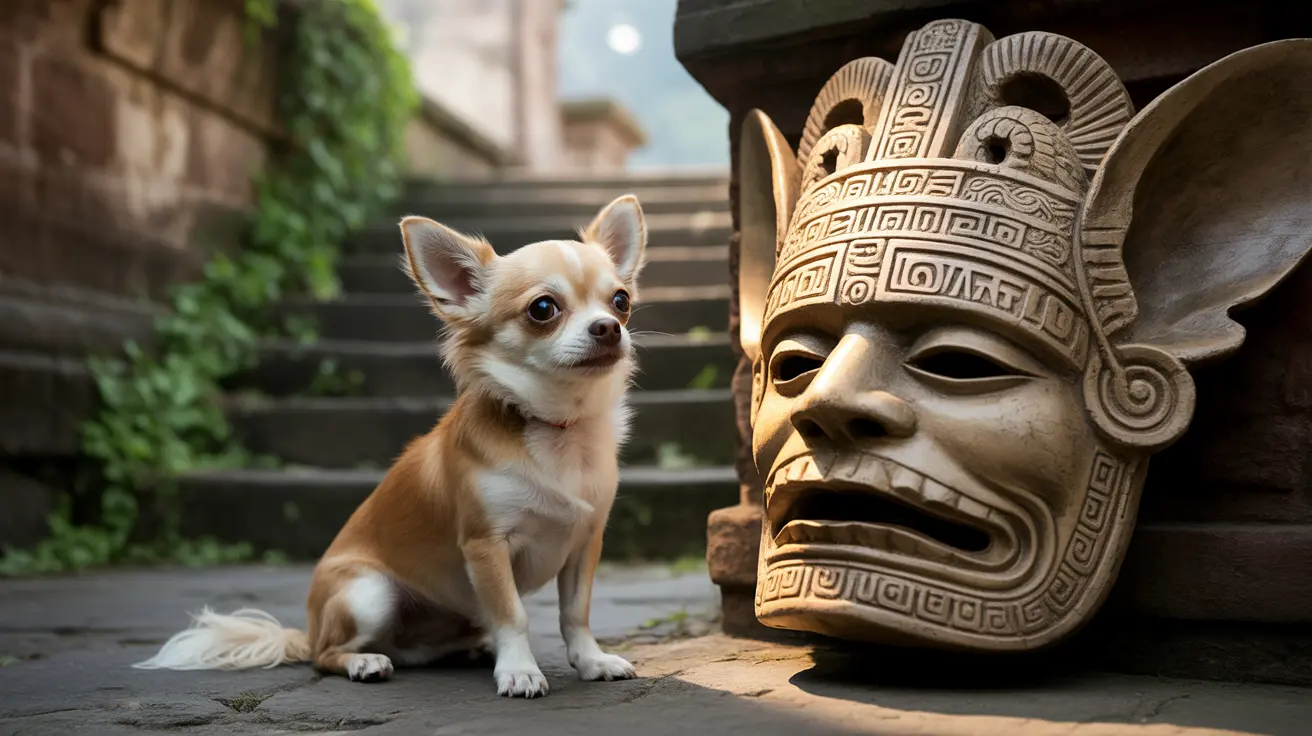Ancient Origins: The Techichi Connection
The Chihuahua's story begins with an ancient breed called the Techichi, kept by the Toltec civilization as far back as the 9th century CE. These dogs were slightly larger than modern Chihuahuas but shared similar physical characteristics, particularly their distinctive head shape and ears. Archaeological evidence suggests these ancient ancestors were primarily bred for companionship, especially among nobility.
The transition from Techichi to modern Chihuahua wasn't straightforward. DNA studies show varying degrees of pre-colonial ancestry, with some research suggesting up to 70% of Chihuahua DNA comes from these ancient dogs, while other studies indicate a much smaller percentage.
Religious and Ceremonial Significance
One of the primary purposes of ancient Chihuahuas was their role in religious ceremonies. The Toltecs and later the Aztecs believed these dogs possessed mystical powers. They were considered sacred animals capable of guiding souls through the afterlife, leading to their frequent inclusion in burial rituals.
These small dogs were often sacrificed and buried with their owners, believed to help spirits cross supernatural barriers in the afterlife. This practice highlights their spiritual significance in pre-Columbian Mexican societies.
Practical Roles in Ancient Society
Beyond their spiritual significance, early Chihuahuas served several practical purposes:
- Companionship for elite families
- Alert dogs, using their keen senses and vocal nature to warn of intruders
- Possible food source during times of scarcity (though this remains debated among historians)
- Warmth providers, as their small size made them perfect lap dogs
Evolution into Modern Companion Dogs
The transformation of Chihuahuas into the breeds we know today began in the late 1800s when American tourists discovered these small dogs in the Mexican state of Chihuahua. Their popularity quickly grew, leading to their recognition by the American Kennel Club in 1904.
Modern Chihuahuas are bred almost exclusively as companion animals, prized for their:
- Loyal and affectionate nature
- Adaptability to various living situations
- Portable size
- Alert and protective instincts
- Intelligence and trainability
Frequently Asked Questions
What were Chihuahuas originally bred for in ancient Mexico?
Chihuahuas were primarily bred for companionship and religious purposes. Their ancestors, the Techichi dogs, were kept by the Toltec and later Aztec civilizations as companion animals for nobility and for use in spiritual ceremonies.
How did the Techichi dogs of the Toltec and Aztec civilizations influence the Chihuahua breed?
The Techichi contributed significantly to the modern Chihuahua's physical characteristics and temperament. These ancient dogs passed down distinctive features like their head shape and size, though modern Chihuahuas are generally smaller than their ancestors.
Were Chihuahuas used in religious ceremonies or sacrifices by ancient cultures?
Yes, Chihuahuas and their ancestors played important roles in religious ceremonies. They were often sacrificed and buried with their owners, believed to guide souls through the afterlife and help them cross supernatural barriers.
Did Chihuahuas have any practical roles beyond companionship in their early history?
Besides companionship, early Chihuahuas served as alert dogs and possibly as a food source in some contexts. Their keen senses and vocal nature made them effective at warning their owners of potential dangers.
How did Chihuahuas transition from ancient spiritual dogs to modern companion pets?
The transition occurred gradually, particularly after American tourists discovered the breed in Mexico during the late 1800s. Their popularity grew in the United States, leading to their official recognition and eventual worldwide popularity as companion animals.
Today's Chihuahuas may live very different lives from their ancient ancestors, but they maintain many of the characteristics that made them valuable companions thousands of years ago. Their evolution from sacred religious animals to beloved family pets showcases their remarkable adaptability and enduring appeal.






